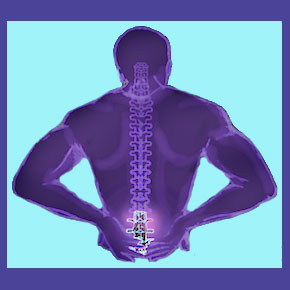
Arthritis in the lumbar spine is a normal occurrence and is usually not overly symptomatic, if at all so. Let it be clearly known that osteoarthritis is the form of the condition that we are discussing in this essay, unless otherwise specified. Osteoarthritis is not a disease and describes expected changes in the spinal anatomy due to age, activity and general structural deterioration of the body. The arthritic processes continue to expand for life once initiated, but it is clear that pain blamed on arthritis generally occurs in patients that are between the ages of 40 and 60. Since these are certainly not the years that arthritis is at its worst in terms of clinical significance, there is already something seriously dubious about the condition and its relationship to lower back pain.
This resource section provides uncompromising coverage of various arthritic manifestations in the lumbar spine. We will examine each aspect of spinal arthritis in dedicated essays focused on providing a complete picture of the diagnosis as a whole.
Arthritis in the Lumbar Spine Explained
Osteoarthritis describes changes to bones and protective measures within joints that occur as completely normal parts of getting older. There is no evidence that osteoarthritis is inherently painful, although it can certainly become so given particular circumstances. However, since the condition itself is not pathological, many cases of low back pain are unfairly and incorrectly linked to coincidental arthritic accumulations in the lumbar spine. This is a real problem with many lower back structural changes that are inherently innocent, but can become pathological in uncommon cases.
Arthritis denotes the breakdown of the mechanics that make joints function under ideal circumstances. This includes the wearing away of protective cartilage, the drying up of synovial fluid and the increased interactions between joint and bone surfaces. None of these issues are universally problematic. However, when bony surfaces interact, osteophytes can form and these spurs can create problems in rare instances of mechanical or neurological pain origination. Arthritic changes can be clearly visualized with any type of medical imaging, although MRI will provide a more detailed view than x-rays, since soft tissues can also be clearly depicted, instead of just skeletal structures.
Lumbar Spinal Arthritis Topics
In order to truly and completely explore the various manifestations of lumbar osteoarthritis, we have written a series of dialogs with each focused on a separate aspect of the arthritic processes. As each new article is published, it will be added to the list below:
Lumbar bone spurs are the most common villains when it comes to pathological arthritis. Osteophytes can form on interacting joint surfaces, in the central spinal canal or in the neuroforaminal spaces, all of which can create pain and related symptomologies.
Lumbar facet joint syndrome is the medical diagnostic term for pain caused by arthritis in the spinal zygapophyseal joints. Facet joint lower back pain can come about due to mechanical dysfunction or neurological compression. Lumbar facet hypertrophy is also a leading contributor to pinched nerves when osteophytes reduce the patency of the neural foramen. Lumbar facet disease is a laughable term for what usually amounts to normal facet joint deterioration. Do not buy into the purposeful nocebo effect here; it can only do you harm!
Lumbar degenerative joint disease is another ridiculous diagnostic terminology that seeks to frighten patients into immediate and often unnecessary care though fear tactics and incorrect diagnostic nomenclature.
Arthritis lower back pain is the rare consequence of normal spinal aging. Lumbar pain that is definitely linked to arthritis is generally some of the easiest types of spinal pathologies to successfully treat.
Lumbar ankylosing spondylitis is an exception to the innocence of most arthritic processes. Both ankylosing spondylitis and its close relative rheumatoid arthritis are autoimmune diseases with distinctive links to the mindbody process.
Arthritis in the Lumbar Spine Guidance
It is crucial to understand that experiencing arthritis is normal and universal in adult humans. We regularly receive letters from shocked 40, 50 and 60 years olds who can not believe they have arthritis in their spines. Listen up: If you are close to middle age or past this milestone, you have arthritis. We do not need to be your doctor to assure you of this fact. There should be no surprise or shock. It is just a simple fact of human anatomy.
Virtually all osteoarthritis is innocent of causing serious pain or any significant structural problems in the vertebral column. However, some arthritic processes can become painful and may even require dramatic medical care in the form of surgery or other treatment. Just remember a basic truth that we cited at the beginning of this article and everything should make more sense to you about how arthritis is often unjustly implicated as a cause of pain, rather than just a consequence of spinal aging: Arthritis worsens as life progresses, but pain linked to arthritis is less common in the elderly than it is in people with less clinically severe cases in their 40s, 50s and 60s. This is truly food for thought.
Lower Back Pain > Arthritis in the Lumbar Spine





